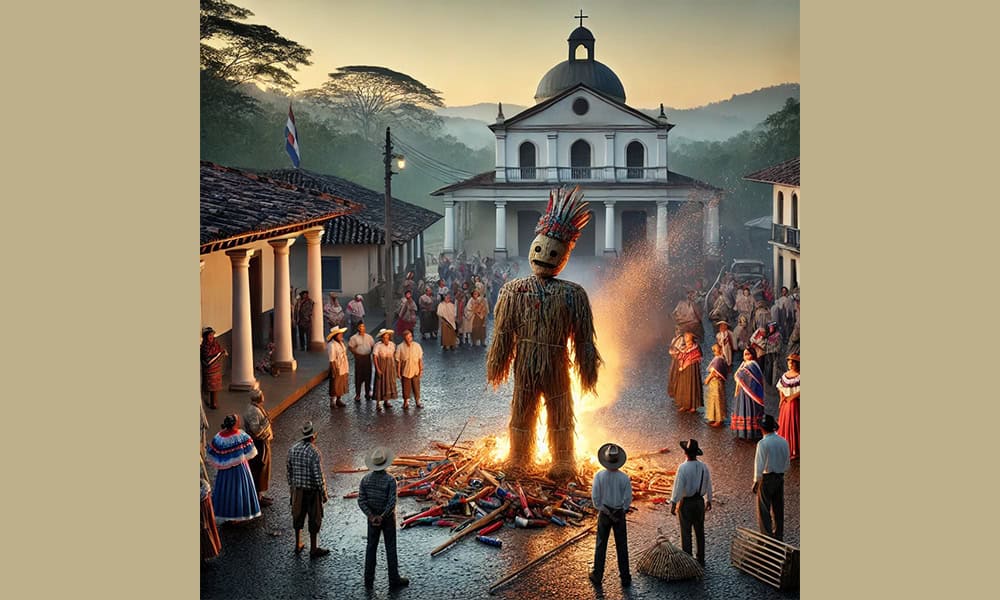Judas Night combines elements of Halloween and Guy Fawkes Day, an all-night revel of pranks culminating in the burning of an effigy of Judas in the plaza in front of the church at dawn on Easter morning. It is a tradition going back to the middle ages but adopted to local custom.
Historically, the name Judas was synonymous for traitor and the effigy represented whoever fit the description. In 1809 in Costa Rica, it was Napoleon Bonaparte who was burned on Judas Night for invading Spain and dethroning King Fernando VII.
Thomas Francis Meagher, a North American visiting Costa Rica in 1859, described the scene in front of the cathedral in San José on Judas Night. “The plaza (now central park) was full of people including señoritas and señoras. There was huge gallows set up, and hanging by a rope an equally large effigy, a Judas, dressed in the ugliest clothes and with a crazy looking cap on its head.
Hidden inside the Judas were firecrackers, gun powder, and fuel, and lighting it was preceded by a profound noise, shouts, whistles, drums, music, booing, dogs barking and parrots squawking.” Then the Judas was lit and exploded. “The cap went flying,” wrote Meagher. “The crowd cheered.”
In the 1870s, Father Joaquín García Carrillo of the parish of San Ramón wrote a long series of verses describing the parishioners, those who didn’t want to build the church, those who fought among themselves and other sinners. He called it the Testamento de Judas.
It was published in Alajuela and became famous not just for its scandalizing comments, but as the first poem of the City of Poets. The verses are similar to the bombas of Guanacaste and are often recited in connection with Judas Night. In 1905, the Testamento de Judas was read in the Central Park at midnight.
Many aged men still get a gleam in their eyes remembering the Judas Nights of their youth when they built a Judas, stuffed it full of firecrackers and marched it up and down rural roads, knocking on doors and running off, shaking old wooden houses to hear the people inside scream, and sneaking off with all the plants and furniture on porches, and even the oxcart and the outhouse, all of which ended up in the church plaza.
One man told his companions as they unscrewed the front gate ready to carry it off: “Let’s not take it too far” he said. “Tomorrow papi’s going to send me out to look for it.” Another still thinks it’s funny that they set a pig down in the yard next to a sleeping drunk and placed his arm around it. Easter morning dawned with the blast of explosions from the hundreds of firecrackers in dozens of Judases set up in church plazas.
In later years Judas Night turned rowdy, an excuse for pranks that went beyond mischief. Broken windows. Fires. Drunken fights. Fun turned to fear of Judas Night. Until some communities and neighborhoods organized their own Judas Night, safe and sane for all the people to enjoy. Families often build a Judas and invite neighbors and friends. An early hour may be set so that the children can see it without fear.
An area around the figure is cleared so that there is no danger from the fire. In one village, a Judas was burned in a lot next to the church following the evening service so that the whole parish could linger and look. We have also seen a Judas propped up in the bed of a pickup truck, which passed along rural roads with the horn blowing, calling every one’s attention. It’s all in making Judas Night fun again.







